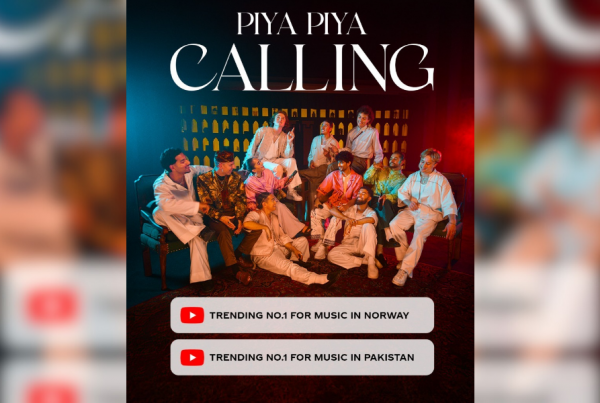Tapu Javeri’s third book, Tapulicious, lifts Pakistan’s celebrity spirit from the past two decades and lands it in the present.
Tapulicious is delicious. It’s a book that allows you to get a taste of celebrity as you browse through its pages. A pack of visual eye candy that bursts at the seams with a flavour of colour and its one basic flaw – the lack of any explanatory text – leaves you urging for more. Put in very clichéd culinary terms, Tapulicious teases the taste buds without really whetting the appetite.
And that’s exactly what Tapu Javeri was aiming at.
“I’m a photographer, not a writer,†he spoke to Dawn Images after the launch of the book. “I believe that an image needs to have the power to say it all. It needs to intrigue people and that’s what I hope these images will achieve. Our young generation doesn’t know much about our stars from yesteryear. They don’t know who Rani is but hopefully her portrait will interest them enough to read up and learn.â€
What this generation does know and has been over-exposed to is that most things they read up and learn about Pakistan are negative. From the daily nine o’clock news to foreign publications they are bombarded with unflattering images of the land they call home. This book puts out a small but significant vote of confidence that there is life beyond the crumbling façade. It is a little something to be proud of.
For a man primarily known for his fashion photography, Javeri has kept the fashion quotient to a bare minimum in Tapulicious. Barring several prominent shoots of his career – the underwater series, 8888: the superimposed fairy tale sequence amongst others – the book focuses entirely on faces. There are musicians and models, politicians and actors, artists and even activists. It couldn’t have been easy; culling these hundred or so pictures from around twenty years of active work on the job. But that is exactly what Javeri has done with Pakistan’s very first coffee table book of its kind. Tapulicious, sponsored by Pond’s, is literally a blast from the past that also draws in the present.
The only irksome factor is the lack of text. One desperately seeks captions, footnotes or any kind of text presenting anecdotal guides to the visuals. One looks at the thickly painted images from Javeri’s 8888 series and wonders how and why this medium was pursued. How did Aaminah Haq get photographed under water? There are stories to be told with each and every session and one feels that the book’s disposable attitude towards words is it’s biggest flaw.
There are, however, surprise features that attempt to make up for its shortcoming. Publisher and jeweler Kiran Aman, in laying out the book, has given each and every personality an audio-visual icon suggestive of his or her status. A quirky little addition that is easily overlooked unless pointed out, there are ‘play, pause, record and power’ icons next to every picture. Look out for the pause sign for “music bands that have broken up or splitâ€. Between Junoon, Vital Signs and Awaz – the three featured in the book – that’s all of them. The placing of the portraits is cheeky too. Some compliment each other while others are a stark contrast, but they do provoke the thought process.
“Tapu gets sacrilegious with celebrity,†Fifi Haroon writes in the book’s preface and these words reverberate as you flip through an image of Gulgee kissing his artwork, one of a bare legged Anita Ayub posing through the camouflage of a burqa or the deeply etched face of Abida Parveen emerging from a black space. It’s evident that the photographer’s focal point has never been to flatter, rather to portray the character. And that, one might say, is the beauty of Tapulicious.
Tapulicious has been sponsored by Pond’s, Published by Still Waters Publishing and is available at Liberty Books
A quick chat with the author…
Q: There’s hardly any other photographer in Pakistan that has had such widespread access to celebrities. Your work is tremendously versatile and you are considered unparalleled…
TJ: I don’t think I’m unparalleled at all. Each one of us (photographers) has given the industry a little boost in our own way. Arif (Mehmood) has given the black and white romance, Ather Shahzad have brought in beauty and Khawar (Riaz) brought the boys into focus.
Q: What kind of work needs to be done to boost it further?
TJ: More than photographers we need people who understand editorial. We need a magazine like Xtra that wakes people us. We need direction. Xtra was cutting edge and experimental. Everyone wanted to be in that magazine. The only magazine going in that direction was FAQ but even FAQ has lost direction. It was progressive back then but there’s too much of everything now.
Q: Quite a bit of your work from Xtra is featured in the book. What guided your choice of selection?
TJ: When I was choosing images I wanted to put in my experimental work. I had to repeat some images from I,Voyeur because I felt that most of my work had been wasted in a badly printed book. I also included a lot of work from Xtra. It was difficult.
Q: Your favourite images?
TJ: My two favourite portraits are of Iraj (cover) and Aaminah Haq (page 1). These are two girls I have worked with most; they are my muses. No other models have been willing to experiment as much, which is what I told them when they asked why they weren’t in the book. Iraj and Aaminah always give 150 per cent.
Q: Are people upset with you for being left out?
TJ: There are quite a few people upset with me but Volume 2 of the book will be coming out and the second book will be more fashion oriented. There’s very little fashion in this one.
Q: What keeps you interested in fashion?
TJ: I don’t associate with the negativity and I work when I like what I see.
Q: Which of the younger designers do you like?
TJ: I would like to say Adnan Pardesy and Fahad Hussayn are at least trying different stuff. But the industry’s power is still in the oldies. Rizwan, Deepak and Maheen are still the ones driving these kids.
Tapu Javeri was talking to Aamna Haider Isani





